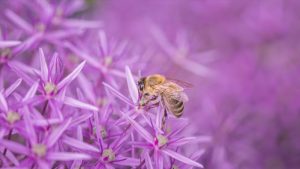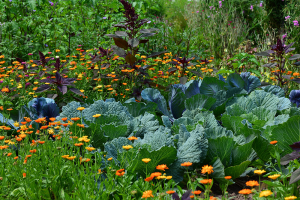Although much is known about the movements that bees make to communicate with one another, a new study conducted by the entomologists of the University of Minnesota has revealed more than 1,500 “waggle dances” used by the bees to indicate to their sisters the location of their favorite flowers.
The team of scientists has decoded the meaning of over 1,500 of these “dance steps”, offering important information for the protection of this species, which is seriously endangered by climate change and pesticides.
“The thing I think is the most interesting about bees is their communication,” said Morgan Carr-Markell, a PhD student at the University of Minnesota and the lead author of a new study published in the journal PLOS One.
Before European colonization, the the midwestern state was covered in prairie lands, but today less than two percent of the original grasslands remain. Many groups that deal with species protection and conservation are trying to revive the grasslands and recreate the conditions suitable for the survival of bees and other pollinating insects.
So Carr-Markell and his colleagues tried to answer two main questions: when are they most involved in foraging? And what types of flowers do bees prefer for pollen and nectar?
To find out, the researchers placed bee colonies (Apis mellifera) in glass-walled observation hives at two different sites: the Belwin Conservancy and the Cowling Arboretum of Carleton College in Minnesota.
Between 2015-2017, the team recorded the female bee dances in their hives.
The dance is explained in the following video, which was created by one of the co-authors of the Margaret Couvillon studio.
In this video, one can notice a movement consisting of 8 gestures, in which the “ballerina” bee moves back and forth to define the direction of a patch of flowers with respect to the Sun on the horizon, creating an angle with its body. In the meantime, it reports the distance from the nearest pollen source in terms of seconds. Each second it moves in a straight line is equivalent to about 750 meters.
The number of repetitions of the dance seems to be related to how profitable the source of food is, as well as the speed with which the bee turns to repeat the “figure of eight”. By decoding and mapping the flowers reported by the bees in 1,528 dances, Carr-Markell and his team thus understood that honey bees were more likely to communicate with their sisters about the sources of nectar in the later part of the foraging season, in the months of August and September.
This could be due to the fact that the colonies are trying to stock up on extra supplies for the winter. In addition, they discovered which sources of pollen most loved by bees, namely the goldenrod and clovers.
Research comes at a difficult time for these insects who are facing various threats from mysterious pathogens, pests, pesticides as well as climate change that is changing ecosystems around the world.
We hope this new discovery will help them.










